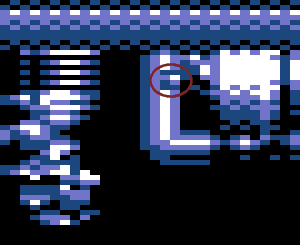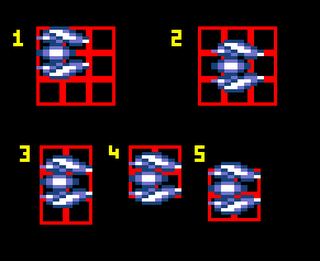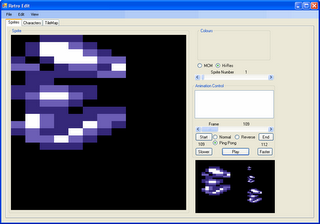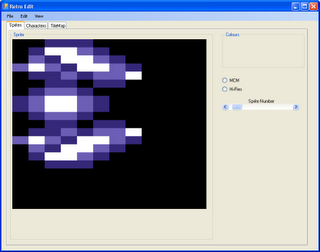Certain areas must still sit on certain boundarys (character sets, screens etc.) but the rest is free game. I've managed to move the data down by moving the sprites and character sets up, and the character animation down. So the current memory map looks like this:-
$0800-$17ff 2 Screens
$1800-$27ff Music (4K)
$2800-$65ff Game Code and DATA (15872 bytes)
$6600-$67ff Character bitmap animations
$6800-$77ff Game charactermap (double buffered) (4K)
$7800-$97ff Sprite graphics (167 16x16's) (8K)
$9800-$9fff Barrel shifter for sprite caching system (MCM version)
$a000-$a2ff Panel Character Set (95 chars + space)
$a300-$aea7 Level Data-13 screens (7*13 - 3x3=91*13=$49F, 200 3x3 blocks=$708) ($ba7)
$aea8-$aeff Spare (88 bytes)
$af00-$bfff PATH data... (4k+256 bytes)
$c000-$efeb 141 pre-rotations... ($2feb - 141*87)
$f000-$f578 ScrollBuffer
$f5a2-$f5ef Sprite address table (built at runtime)
$f6f0-$fd00 Spare.... (1.5k)
$fd00-$ffff IO/Hardware/Vectors
I moved the fixed table of sprite addresses out of the data area and into a bit of free space right at the top of memory, but instead of a table, I build it with a little code at runtime. This keeps the EXE down and saves loading diddy little tables. I also stripped out the last bits of the save/replace sprite system (it's still there, just commented out) which freed up a little more space.
So all in all I now have 2,721 bytes left. Still not a lot... Now it gets tricky....



